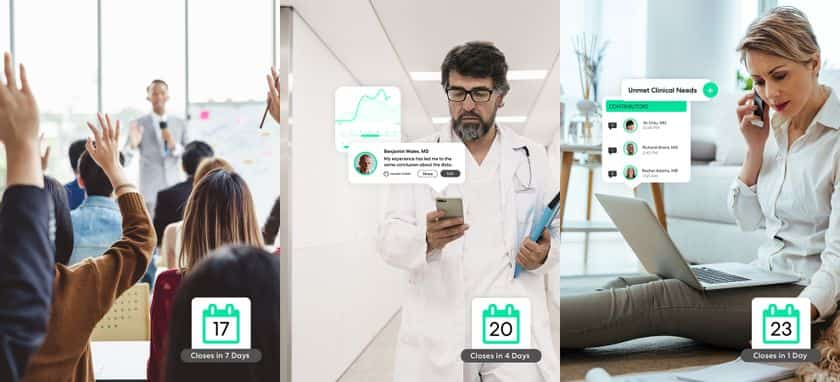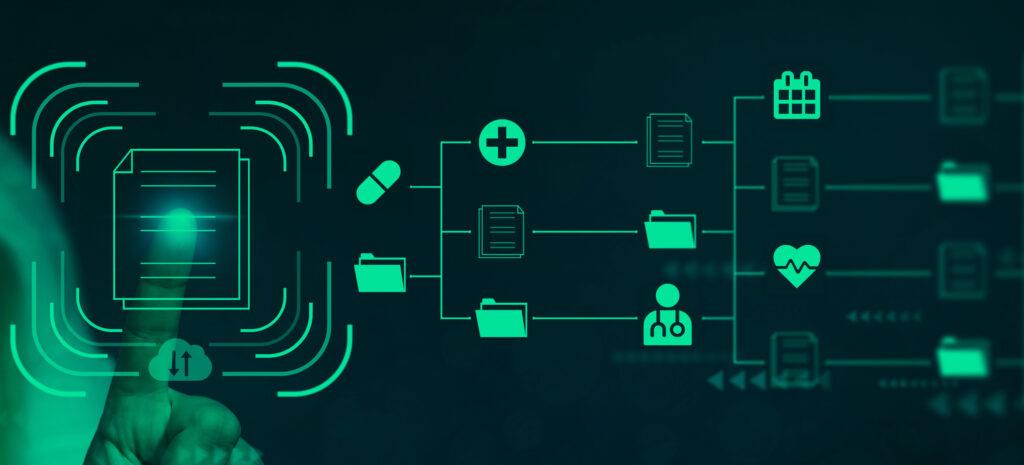Pharma virtual engagement skyrocketed to prominence during the pandemic. For more than two years, life science companies shifted everything from congresses to clinical trials online. Looking back at this game-changing experience, what did drug companies learn? And what parts of their virtual education did they build on for the future? Let’s examine how the trend of virtual engagement became a bigger story about technology, time, efficiency, and using resources wisely.
An accelerated education in virtual collaboration
Life science companies learned a lot about agility beginning in early 2020. Across the drug development process, change was swift: clinical teams quickly adjusted to the benefits of decentralized clinical trials. MSLs shifted to virtual interaction with KOLs and healthcare professionals. Teams found a way to keep work moving forward while dealing with unprecedented disruption and public pressure for a vaccine and other lifesaving treatments.
Despite the postponements and cancelations, the disruption and inconvenience, the industry began to realize the benefits of having another option for communication and collaboration. When events shut down, in many ways, the world opened up. Pharma leaders experienced higher engagement rates due to increased convenience for participants. Global perspectives emerged. These benefits highlighted the potential of including virtual elements in even the most traditionally face-to-face environments.
Free your team to get more congress insights with fewer congress meetings.
Built-in flexibility and risk reduction
As vaccinations increased, more in-person events returned, but things weren’t quite “normal.” People had different degrees of risk tolerance, COVID-19 cases still spiked, and it was clear that virtual options were still very much a must-have. Many HCPs, having grown accustomed to having more control over their schedules, saw their future as an equal balance of physical and virtual. The availability of virtual attendance was a reliable way to reduce the likelihood of last-minute cancellations and no-shows. It opened events and opportunities to KOLs too busy to commit to multi-day travel.
Life science teams began using virtual engagement to augment in-person meetings. When a European medical affairs team needed more input on key study data from a medical congress, they expanded their pool of KOLs by quickly putting together a virtual meeting to parallel a face-to-face advisory board. The team got more insight into the study data and found the transcript generated in the asynchronous session superior to traditional means of recording impressions at an in-person meeting.
Before the pandemic, some Within3 clients were already holding asynchronous congress huddles to capture feedback onsite without adding more meetings to attendees’ packed schedules, adding a time-saving virtual element to a traditionally in-person event. Now, a few years on, the advantages of asynchronous are even more clear, and life science organizations are leaning on it to maximize the value of in-person events.
Adopting new ways of working
Industries have returned to pre-pandemic levels of business travel and in-person interaction, but there’s no denying that our work habits and expectations are permanently altered. In a world where uncertainty persists and priorities have shifted, some key experts will choose to travel less or not at all. Accounting for this cultural change should be on the radar of life science teams, who should be prepared to offer KOLs meaningful virtual interaction.
Our own experience helping clients engage with KOLs both before and during the pandemic reflects that experts appreciate the ability to have more control over when and where they share their expertise. Post-session research shows that more time with patients and at home, the ability to learn from global peers, and the opportunity for everyone to be heard are among the top reasons many KOLs and KEEs prefer asynchronous engagement.
Managing insights from multiple channels
One of the trends we predicted late last year was that pharma leaders would need a way to manage insights gleaned from face-to-face interaction. Beyond a video or transcript of meetings, teams need a way to capture impressions on the fly, whether they’re on the floor of a medical congress or meeting with KOLs one-on-one in the field. These valuable interactions can’t simply vanish into a notebook or a quick email – they need to be captured, analyzed, and shared alongside data from other sources.
With so many pharma organizations newly invested in virtual collaboration and so convinced of its value, the rise of insights management was inevitable. Our own insights management survey shows that while many medical affairs teams are still seeking a way to make all their existing technology work together, some have already shifted to a single, central way of managing insights. And most – 85% – believe this more unified approach helps them work more effectively.
Pharma companies have moved beyond the pandemic but continue to leverage technology and lessons learned to successfully engage virtual and physical audiences and boost the value of those interactions. And while we welcome the ability to safely see each other in person again, virtual tools still transform our interactions.






